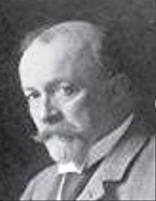Presents
Prince Heinrich XXIV Reuss of Köstritz
 |
 |
- Soundbites courtesy of Steve Jones |
String Sextet No.2 in b minor, Op.17
“The String Sextet No.2 in b minor by Heinrich XXIV Prince Reuss is a first rate work of art which need not fear comparison even with the sextets of Brahms. Completed in 1901, this is a piece which every chamber music lover should get to know. It is a work of superb craftsmanship which is tonally beautiful throughout and is comfortable to perform. The first movement, Allegro non troppo, has for its main theme a melody which resembles that of the form of a legend. The second subject is graceful and fresh and its appeal is heightened by the pizzicato accompaniment. The development shows that the composer is a master of counterpoint. The second movement, Andante con moto, is a deeply felt and atmospheric song without words, which charms by its simplicity. The main section of the Allegretto quasi andantino which follows calls to mind corresponding movements from Brahms Second Symphony and First Serenade but is certainly not imitative. There is a whimsical trio section and clever Vivace coda. The finale, Allegro ma non troppo e grazioso, shows, like Brahms, the composer's affection for Hungarian gypsy melody. Not only is this well done but the contrasting musette section makes a good impression as well."---The famed critic Wilhelm Altmann writing in his Handbook for Chamber Music Players.
Prince Heinrich XXIV Reuss of Köstritz (1855-1910), was born in the Prussian town of Trebschen. The Reusses were a large old German noble family with several branches and literally dozens of princes called Heinrich. There was even another Prince Heinrich XXIV, but he "of Greiz", hence the need for the lengthy name. Our Prince Reuss after initially studying music with his father, who had been a student of Carl Reissiger, took a law degree. However, subsequently he devoted himself to music, studying composition privately with Heinrich von Herzogenberg who introduced him to Brahms. Although Brahms never formally gave lessons to Reuss, according to the prince he gave the young composer numerous suggestions and considerable help which as far as Reuss was concerned almost amounted to the same thing. Though not a prolific composer, he did pen six symphonies as well as a considerable amount of chamber music, including five string quartets, two string sextets, three piano trios, a piano quartet, a piano quintet as well as several instrumental sonatas. His style can be summed up as an amalgam of Brahms, Herzogenberg and to some extent Dvorak and Mendelssohn. His works were premiered to critical acclaim and were held in high regard for many years before disappearing from the repertoire after the First World War.
This is a masterpiece which belongs in the front rank of string sextets. Made for string players, it almost plays itself and is in no way technically difficult. Long out of print, we are pleased to make it available once again and warmly recommend it to all our chamber music friends.
Parts: $39.95